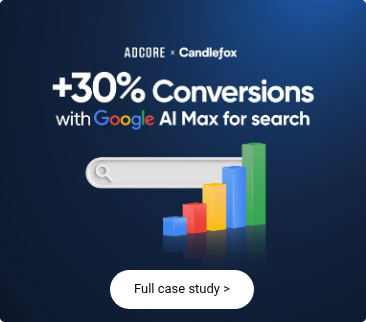A Beginner’s Guide to First-Party Data
A Beginner’s Guide to First-Party
Data
Say goodbye to third-party cookies. It’s time to switch to another kind of party, and no, we’re not talking about the kind with kegs and red solo cups. We’re talking about first-party data—and it’s time to get to know it a whole lot better.
The Internet is moving to ban third-party cookies, which track the activity of those who visit websites across the web. (Yep, that’s pretty much all of us.) Google is leading the charge with its announced plans to phase out support for third-party cookies in Chrome within two years. Apple’s Safari and Microsoft’s Edge browsers already have built-in features that limit the use of third-party cookies, and Mozilla Firefox is considering following suit.
This could spell trouble for the online advertising ecosystem, which has long relied on third-party cookies to target ads and measure their effectiveness. But it doesn’t have to be all doom and gloom. On the contrary, first-party data provides an opportunity for brands to take back control of their data and create more valuable, seamless customer experiences.
This article will give you a crash course in all things first-party data, including the answer to the question: ”What is first-party data?” why it matters, and how to get started collecting and using it. Without further ado, let’s get this first-party started.

What is first-party data?
First-party data is information that is collected by a website or app from its visitors. This data includes anything from demographics (age, gender, location) to behavior (purchases, pageviews, clicks) and can be used to create more personalized experiences for website visitors and improve the overall effectiveness of marketing campaigns.
In contrast, third-party data is collected by organizations (such as data brokers) that collect and sell information about internet users. This data is often used for targeted advertising, but it can also be used for other purposes such as market research or lead generation.
The use of first-party data is not new—brands have collected this type of information from their customers for years. However, with the impending demise of third-party cookies, first-party data is becoming increasingly important as a way to collect information about website visitors and target them with relevant ads and content.
Why is First-Party Data Important?
There are several reasons why first-party data is essential, but the two most important are:
- You own your data.
- First-party data is more accurate.
Let’s take a closer look at each of these points.
1. You Own Your Data.
When you collect first-party data, you own that data—plain and simple. You can use it however you want, and you don’t have to worry about any legalities around its usage. This is in contrast to third-party data, which is often collected without the consent of those being tracked and marketed to the highest bidder.
2. First-Party Data is More Accurate.
Since first-party data is collected directly from your website or app, you can be sure that it’s accurate. This is important for two reasons: first, because you want to make sure that you’re targeting the right people with your ads and content, and second, because inaccurate data can lead to wasted spend on marketing campaigns.
In addition, first-party data can be more complete than third-party data. For example, if you’re collecting information about purchases made on your website, you’ll have access to data such as the items purchased, the date of purchase, and the shipping information. Unlike third-party data, which is often aggregated and anonymized, first-party data can provide a wealth of knowledge that can be used to create more targeted and effective marketing campaigns.

The different types of consumer data
We can’t talk about first-party data without the different consumer data types. Below is a brief overview of the most common types of data, along with some examples of how they can be used.
Second-party and third-party data
Second-party data is data that is collected by one organization and sold to another. Third-party data is data that is collected by an organization and then sold to multiple buyers.
Second-party and third-party data can be helpful, but they come with a few caveats:
- As we mentioned before, you don’t own this data, so you have to be careful about how you use it.
- This data is often inaccurate and incomplete.
- Since this data is collected and sold by organizations that are not affiliated with your brand, it can be challenging to build trust with potential customers.
With that being said, there are some instances where second-party or third-party data can be useful. For example, if you’re trying to reach a new audience that you don’t have any first-party data on, second- or third-party data can help you fill in the gaps.
First-party data provides an opportunity for brands to take back control of their data and create more valuable, seamless customer experiences.
Behavioral Data
Behavioral data is information that is collected about a consumer’s online activity. This includes things like the websites they visit, the searches they make, and the ads they click on.
Behavioral data can be useful for understanding what consumers are interested in and tailoring your marketing efforts accordingly. However, it’s important to note that this data is often collected without the consumer’s knowledge or consent, which can make it challenging to build trust with potential customers.
Demographic Data
Demographic data is information that describes a population, such as age, gender, income, education level, and location.
This type of data can be useful for understanding who your target audience is and what type of content they might be interested in. However, it’s important to remember that not all consumers fit neatly into demographic categories. Therefore, this data should be used in conjunction with other types of data to get a more complete picture of your target audience.
Zero-Party Data
An additional type of data we have to mention is zero-party data. Think of this as details your visitors and customers directly tell you to personalize their own customer experience.
Say, for example, you own an online store that sells clothes. A customer comes to your website and creates an account. When they create their account, they provide you with information such as their clothing size, the types of clothes they like, and the occasions they need clothes for. This is all zero-party data.
Zero-party data can be incredibly useful for creating a more personalized customer experience. And since this data is collected directly from the consumer, it is more accurate and complete than other types of data.
Website Cookies

As delicious as they sound, website cookies are not the kind you eat. Although we have to admit, they are just as sneaky.
Website cookies are small pieces of code that are placed on a consumer’s computer when they visit a website. Cookies can be used for various purposes, such as tracking a consumer’s online activity, personalizing their experience, and serving targeted ads.
First-party cookies are the advertiser collecting information. So, if you have a website and you place a cookie on someone’s computer, that is a first-party cookie. You then own the data that is collected.
Third-party cookies, however, are not hosted by you at all. Instead, they are placed on a consumer’s computer by a third-party organization, such as an ad network. These cookies can be used to track a consumer’s online activity across multiple websites and serve them targeted ads.
The End of Third-Party Cookies
So third-party cookies are going away; they’re being abolished across the Internet. Why? Because they’re the main culprit of privacy concerns. Companies have been collecting data on people without them knowing it. As we’ve mentioned, this data is often collected without the consumer’s knowledge or consent, making it challenging to build confidence with possible consumers.
In addition, third-party cookies can be used to track a consumer’s online activity across multiple websites and serve them targeted ads. This means that a consumer could see the same ad repeatedly, even if they’re not interested in the product or service.
Apple and Google said they would stop making technology that uses third-party cookies by the end of 2022, and Mozilla has already blocked them in Firefox. So, it’s only a matter of time before all major browsers do the same.
The end of third-party cookies is a good thing for consumers, as it will give them more control over their data. However, it will present a challenge for marketers, as they now must find new ways to collect data and serve targeted ads.
The Future of Data Collection
What does the future of data look like?
It’s hard to say for sure, but we think it will involve much more first-party data. As we mentioned, this type of data is collected directly from the consumer, so it is more accurate and complete than other types of data. In addition, first-party data is more likely to be collected with the consumer’s knowledge and consent, which will build trust between the consumer and the company.
We also think that the future of data will be more privacy-centric. Companies will need to be more transparent about the data they’re collecting and how they use it. In addition, consumers will need to be given more control over their data.
Finally, we think that the future of data will be more decentralized. Rather than having a few large companies control the data, we believe that the data will be distributed across several different platforms. This will give consumers more choice and control over their data.
The Importance of First-Party
Data
As the saying goes, data is the new oil. And first-party data is the best quality oil you can get.
We now know that first-party data is data that is collected directly from the source, such as a customer filling out a form on your website. This means that the consumer has chosen to share their information with you, so you’re no longer relying on cookies or other tracking methods.
In fact, your marketing efforts will be much more effective if you focus on first-party data. Instead of pesky ads that follow consumers around the Internet, you’ll be able to deliver targeted messages that are relevant to the customer. And the best part of all? Your message will actually be welcomed.
Yep, you heard right. The customer will actually want to see your message because it’s relevant to them. No more guessing game; you’ll know exactly what they want and when they want it.
The Benefits and Challenges of First-Party Data

The Benefits of First-Party Data
There are many benefits to using first-party data, including:
- Personalized campaigns for your business: Personalization always wins. Customers are more likely to engage with a message that is tailored to them.
- The higher conversion rate on your ads: When you use first-party data, your ads will be more targeted and relevant to the customer. This means that they’re more likely to convert, whether that’s making a purchase, signing up for a newsletter, or taking another desired action.
- Higher customer lifetime value: First-party data allows you to build long-term relationships with your customers. By understanding their needs and preferences, you can provide them with the best possible experience. This, in turn, will lead to higher customer lifetime value.
- More relevant experience for the customer: Customers don’t want to be bombarded with irrelevant ads. They want a personalized, relevant experience. So go ahead and give it to them.
The Challenges of First-Party Data
In many ways, first-party data is the Holy Grail of marketing data. However, as with anything, there are some challenges that come along with it:
- It can be difficult to collect: You need to have a system in place to capture this data, which can be difficult if you’re not used to working with it.
- It’s not always accurate: First-party data is only as good as the information that’s been inputted into it. If there are errors in the data, then your marketing efforts will be off.
- It can be time-consuming to gather: First-party data requires more effort to collect than other types of data.
- You need consent: In order to use first-party data, you need to have the consumer’s consent. This means that you’ll need to be very transparent about how you’re going to use their data.
Despite these challenges, we believe that the benefits of first-party data outweigh the challenges. When used correctly, first-party data can help you create more personalized, relevant, and effective marketing campaigns.
How to Collect First-Party Data
The advertiser is always in charge of collecting your first-party data. How you go about it depends on what works best for your business and any privacy regulations you must follow.
At the very least, ensure your customers know how you process their information and what you’ll do with it once you have it. In addition, it gives people a way to opt-out if they only want some marketing messages or decide they wish for none.
One of the most aggravating things to the customer is receiving constant messages and emails about a product they are not interested in. Unfortunately, some companies create an overly complicated form or method to stop receiving those emails, so it is always crucial to keep things simple, such as adding an unsubscribe button at the end of the messages that will directly remove the customer from the mailing list.
FPD strategies
A sure-fire strategy to collect first-party data is to offer something valuable in exchange for customer information. Therefore, giving people an incentive that makes them want to provide you with their emails, names, or phone numbers is essential. Some strategies to gather this data include:
- Conduct a survey: Asking people to take a survey is a great way to collect first-party data. You can offer a discount or prize in exchange for taking the survey. Just make sure that the questions are relevant to your business and that you don’t ask for too much information.
- Run a contest: People love contests, especially if there’s a prize involved. You can collect first-party data by having people enter their contact information to win.
- Offer a free trial: Another great way to collect first-party data is to offer a free trial of your product or service. This allows people to try out what you have to offer and see if they like it before they commit to anything.
- Information webinars: Webinars are a great way to provide valuable information while also collecting first-party data. People will be more likely to sign up for your webinar if they know they’ll be getting something out of it.
The list does not stop here, there are always more things you can do to make the customer feel more comfortable and welcomed, but it’s a great place to start.
The privacy revolution: how to use FPD in marketing responsibly
You are constantly bombarded by ads whenever you go online, whether on a website or a social media platform. For example, on Instagram, you will get a sponsored post between every two posts from pages you follow, and on YouTube, you have to watch a short ad before every video. This is because brands use cookies to track your online behavior and show you tailored ads.
The problem with this model is that it’s becoming increasingly intrusive, and people are starting to resent it. Sometimes, customers feel like they are not in control of what they see, which might deter them from your product, even if they need it.
Recently, customers’ search for online privacy has grown by 50%, and 1 out of 4 people use some ad block extension to remove the bothersome ads. With this in mind, advertisers have to act now to be ready for this surge in privacy concerns and use first-party data to stay ahead of the curve.
To ensure that the collected data is used responsibly, it is essential to consult with privacy officers to monitor the advertiser’s behavior and ensure that the collected information is not manipulated. When you invest in the security of your data, you confirm to your customer that the data they exchange with you is in safe hands.
The last, and most crucial point, is that customer data should be to the benefit of the customer. Take Spotify, for instance, which uses first-party data to generate weekly playlists for its users based on their listening habits. In this way, the customer feels that their data is used to improve their experience with the product, instead of being used to bombard them with ads.
How do you communicate to your users that you collect their data?
When a customer agrees on a marketing cookie or marketing opt-in, you must clarify that their data is being collected because they must give their full consent. Privacy pages and terms are a great way to explain, in straightforward language, what you will do with your data.
Interestingly, 78% of people don’t mind if you use their data as long as they are being offered something in return that is of value to them. Free shipping, coupons, or access to exclusive content are some examples of what you can offer in exchange for customer information.
In addition, top banners are an excellent way of getting attention and informing people that you use cookies and how they can opt-out if they want to.

Data Management Platform
A data management platform (DMP) essentially is a tool that allows advertisers and tech companies to collect data on their users and then be able to retarget that user in a meaningful way.
It could be that a tech company or an advertiser has their internal DMP with their first-party data, which they use to identify who to target and who to advertise to. Some companies sell third-party data, such as axiom and blue chi, but the advertiser will have to pay a fee, and the data results may not match the user base of the advertiser.
Speaking in sales terms, you have the advertiser side (supply), and the user side (demand), and in the middle, you would have your DMP with all the user data included. Now, this tool can help you organize and manage your data in a way that makes it available on demand. Think of it as some filter that gives you precise results based on the required input.
Let’s say you are selling a specific product, and your target audience is young males between the age of 18 and 40, who have an annual income of $75,000 per year, living in the east coast area of the US. Your database is already full of different users from all age groups and locations, but inputting the required specifications into your DMP will narrow your results to only the necessary demographic, resulting in more focused groups and more sales.
The DMP is a great tool to help you narrow your search and find unique users to advertise to, making your ad more profitable and yielding more results.
How to Improve Your Analytics and Marketing with First-Party Data
Information collected from users who directly interact with your website, app, or in-store is what FPD is. Every aspect of your business interacting with customers is an opportunity for you to learn about your users and develop strong relationships with them. So it is crucial to have the right tool and consent to use that data.
There are a few ways to manage this data correctly, which we discuss next.
#1 Site Visitor Data
It is essential to look at site visitor data. A robust tagging infrastructure will help you leverage the data users share when interacting with your website. Set up first-party cookies using sitewide tagging methods to measure conversions more accurately. This tagging can be done with tools such as Google’s global site tag or Google Tag Manager.
#2 Utilizing Mobile Apps
If you are advertising on a mobile app, you can add a software development kit (SDK) to the app. This will help you gather data from people’s actions downloading and engaging with the app. If you need more information about SDK and how to incorporate it into your apps, check this link; we found it very helpful.
#3 Using Partnerships and B2B
You can use partnerships or B2B deals to help you connect directly with users and build up your first-party data if direct data is not a viable option. For example, suppose you’re a sporting goods company. In that case, you could consider partnering with a well knows sports equipment seller, like Decathlon or Nike, to broaden your audience reach and build up your data, but this might be a bit costly for small businesses.
The baseline here is the more value and relevance your ads offer, the more receptive your users will be. Every user touchpoint gives you insight into building meaningful relationships and providing a relevant, personalized experience for your users. And it’s essential to test your plan and tweak it to ensure that you have the correct relevant information.
Conclusion
In the future, there will be no such thing as third-party data. Nobody wants to give out their information to mega-corporations who take advantage of them and manipulate them. This is the age of privacy, and if you want to go to the top and reach new heights, you have to understand and utilize first-party data to the best of your abilities.
The best kind of party is a private party, which is what FPD offers – a personalized experience. If you want to learn more, we at Adcore would love to answer any questions you have. Visit our website or give us a call, and let’s talk about how we can execute a first-party data plan for your business.
Trending Articles
Get exclusive CMO tips that I only share with email subscribers.
Related Articles

